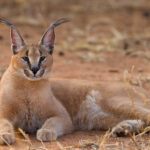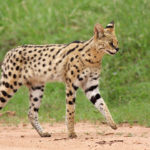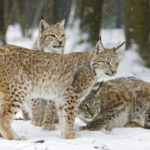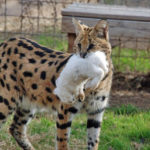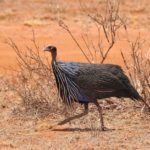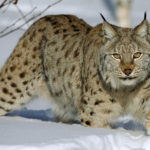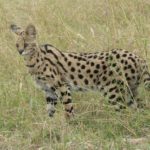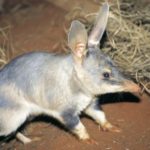Caracals
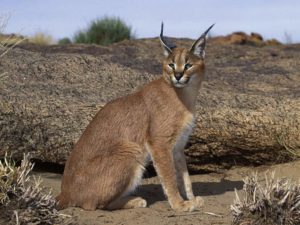 One of the brightest representatives of large cats is the caracal, a steppe lynx. Externally, caracals and lynxes are very similar, but they have a number of different genetic signs, on the basis of which they were taken out into a separate genus. Caracal live in the steppes of southwest Asia and Africa, in addition, they are found on the Arabian Peninsula, where they prefer desert, but in the Sahara they are not.
One of the brightest representatives of large cats is the caracal, a steppe lynx. Externally, caracals and lynxes are very similar, but they have a number of different genetic signs, on the basis of which they were taken out into a separate genus. Caracal live in the steppes of southwest Asia and Africa, in addition, they are found on the Arabian Peninsula, where they prefer desert, but in the Sahara they are not.
These predators are quite numerous in southern Africa and Namibia, and in the northern part of the continent they are extremely rare. In the CIS, the Caracallians live in Uzbekistan and Turkmenistan. The wool of caracal is short. The color is quite diverse, it can vary depending on the habitat: it varies from sand to brown. The lower part of the body is lighter and covered with a large number of spots. Also there are spots on the face.
Ears are highly planted, they are always in an upright position, they are surrounded by long tassels. At the caracals living in Nigeria, the tassels on the ears are white, and for all other caracals they are black. The coat color of the caracal remains almost the same throughout the year, but in the winter it becomes slightly lighter.
The body length of the steppe lynx is 62-90 centimeters, and the length of the tail reaches 18-34 centimeters. Males of caracals are much larger than females, their weight can reach up to 20 kilograms, and females weigh about 13 kilograms.
The caracals have well developed hind legs, so they can make jumps in length about 4.5 meters, with the jump being done almost from the spot. On the paws there is a wool, which facilitates the caracal movement along the sand.
Caracal gets along with other representatives of the cat family – serval, these predators share one habitat. Live caracals not only in the steppes, but also in plains, forests, savannahs and highlands, they even meet at an altitude of up to 3 thousand meters. In the desert, caracals do not go often, although they tolerate the drought well. For a long time they can do without water, existing due to the moisture obtained from food.
In the afternoon they hide in the thickets from the scorching sun, and at night they go out hunting. Caracas lead a single way of life. They have their own fodder areas, which are not allowed to other predators. The feeding areas of the caracals of Africa are quite extensive, they range from 4 to 60 kilometers, and the predators living in Asia have even more, and reach up to 300 kilometers. The territory of females is 2 times smaller than the territory of males. Sections of females never intersect, and in males it is possible.


